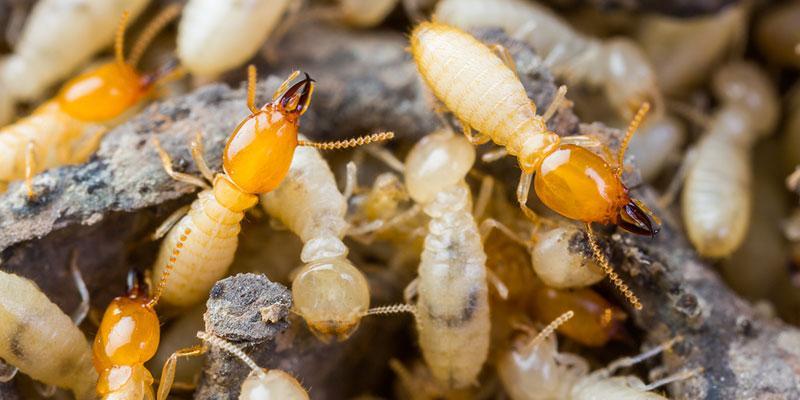Everything You Need to Know About Termites in Tennessee

When you’re a homeowner, it’s natural to worry about termites. These pests may be small, but they can have a big impact on your home and cause extensive structural damage, leaving you to foot the bill. In fact, termites are so destructive that they cause over $5 billion in damages to homes across the US every year. That might sound overwhelming, but we’re here to teach you everything you need to know about termites here in Tennessee.
How Common are Termites in Homes?
Termites are a common pest in Tennessee, and it is estimated that more than 1 in every 10 homes in the state are at risk of termite damage. Termites thrive in the warm and humid climate in Tennessee, and they feed on the cellulose found in wood, which makes homes and other wooden structures ideal targets for their infestations.
Types of Termites in Tennessee
There are over 2,000 species of termites across the world, each unique in their own appearance and behavior. Fortunately, only 50 of these species are found in the United States, falling into one of three main categories: subterranean, drywood, or dampwood.
Subterranean Termites
The most common kind of termites in Tennessee are subterranean termites. Subterranean termites live underground and create mud tubes, a type of tunnel, to safely travel from their nest to their food sources. They have saw-toothed jaws which allow them to bite off small fragments of wood, which is how they inflict damage on structures such as your home. Subterranean termites are active 24/7, which means they’re constantly eating, making them the most destructive type of termite.
Their colonies have several different castes; king, queen, soldiers, and workers.
- Worker termites - are generally small in size, around ⅛” long. For their entire 2-year lifespan, they will spend 24 hours a day working. In addition to their size, you’ll be able to identify them by their creamy, translucent color.
- Swarmers - are a little bigger, around ⅜” long, with a dark brown body. They’ll also have brown-gray wings, whereas the worker termites will not.
Dampwood Termites
Dampwood termites get their name from their preference for moist, decaying wood, and can be often found in rotting stumps and logs. At about ½” in length, dampwood termites are larger than other species and while they don’t usually target homes, they are capable of quickly damaging buried fence posts or poles, especially in moist ground.
Formosan Termites
Formosan termites are actually a species of subterranean termites, but are often differentiated due to their ability to cause extreme damage. A typical termite colony houses several thousands of termites, but a Formosan colony can contain several million. While they do live underground, they can also create nests aboveground, allowing them to easily travel as they rapidly destroy a structure.
A Formosan colony also has a caste system: reproductive termites, soldiers, and workers.
- Formosan swarmers - are around the same size as the Eastern subterranean swarmers, measuring around 5/16”. The main difference is their coloring: pale yellow to brownish-yellow.
- Formosan soldiers - will have a more rounded head that tapers to the front.
Termites Vs Ants
To the untrained eye, termites might look a lot like flying ants, but there are differences. Termites have straight antennae and longish, flat bodies, whereas ants have curved antennae and shorter body with a pinched-in thorax. Ants will have a more narrow waist, whereas a termite will have a more narrow waist. Formosan termites enter homes through any wood contacting the soil and use mud tubes as their highway into structures where they colonize and feed.
Signs You Have Termites
Termites are small and discreet, making it difficult to spot them before it’s too late. Instead of searching for the pests themselves, it’s easier to keep a lookout for signs of termite activity instead. Signs of termites include:
- Uneven flooring, including loose tiles, buckling wood, and warped laminate
- Stuck windows or doors that used to open easily
- Maze-like patterns or pinpoint holes on walls, floorboards, or furniture
- Hollow-sounding wood
- Flying termites or piles of their discarded wings
If you’re still uncertain whether or not you have an infestation, consult a termite exterminator who can perform a thorough inspection of your home.
How to Prevent Termites in Tennessee
While there are precautions you can take to help prevent termites, they aren’t foolproof. What works for your neighbor might not work for you and vice versa—it depends on your unique home, the soil around it, and how vigilant you are.
Some steps you can take to prevent termites include:
- Reduce soil to wood contact: remove plants, wood, mulch, timber, and other materials from your foundation, creating at least a six-inch gap. Store firewood at least 20 feet from your home.
- Promote soil drainage: ensure drain pipes are turned away from your foundation and there are no leaky fixtures.
- Remove access: seal the gap between utility lines and where they enter your home to eliminate potential entry points.
- Inspect new lumber: inspect all pieces of lumber for signs of termites before bringing them onto your property.
- Reduce moisture levels in and around your home: Crawlspace encapsulation can help keep moisture levels low. Repairing leaking faucets, water pipes, and exterior AC units will also help.
- Replace broken or missing weather stripping and loose mortar around your foundation, windows, and doors.
- Where possible, replace landscaping mulch with cellulose-free alternatives.
- Monitor your foundation for the formation of mud tubes, as well as check windows and doors for discarded wings.
How to Get Rid of Termites
Termites may be intimidating, but that doesn’t mean you need to panic if you discover an infestation. While DIY options may sound tempting, they’re often ineffective and actually give termites more time to do damage, costing you more money in the long run. The three main ways to treat termites are:
- Soil treatments are best used against subterranean termites because they live in the soil. The treated soil will act as a barrier around your home to keep termites from crossing. A trench will be dug around your home, treated with termiticide, then refilled.
- Wood treatments can deter termites and prevent further damage, and existing wood can be treated with borate-based chemicals to kill and deter termites. Wood can be treated prior to construction to prevent termites, and some woods like cedar and redwood are naturally resistant to termites.
- Bait systems, such as the Sentricon® Termite Colony Elimination System with Always Active™ we use in our professional termite treatments, are an effective way to completely destroy a colony. Stations with bait are placed around the perimeter of your home and monitored on a schedule to determine if there’s any termite activity.
Professional Termite Exterminators
Instead of attempting termite treatment on your own, contact Sherrill Pest Control at 888-656-3345 for professional termite treatment! We’ve been helping neighbors just like you reclaim their homes from termites since 1965, so you can feel confident you’re in capable hands. Our state-of-the-art technology eliminates existing termites and prevents future infestations from taking hold, providing lasting protection for your biggest investment.
We offer termite treatment services in the following locations:
